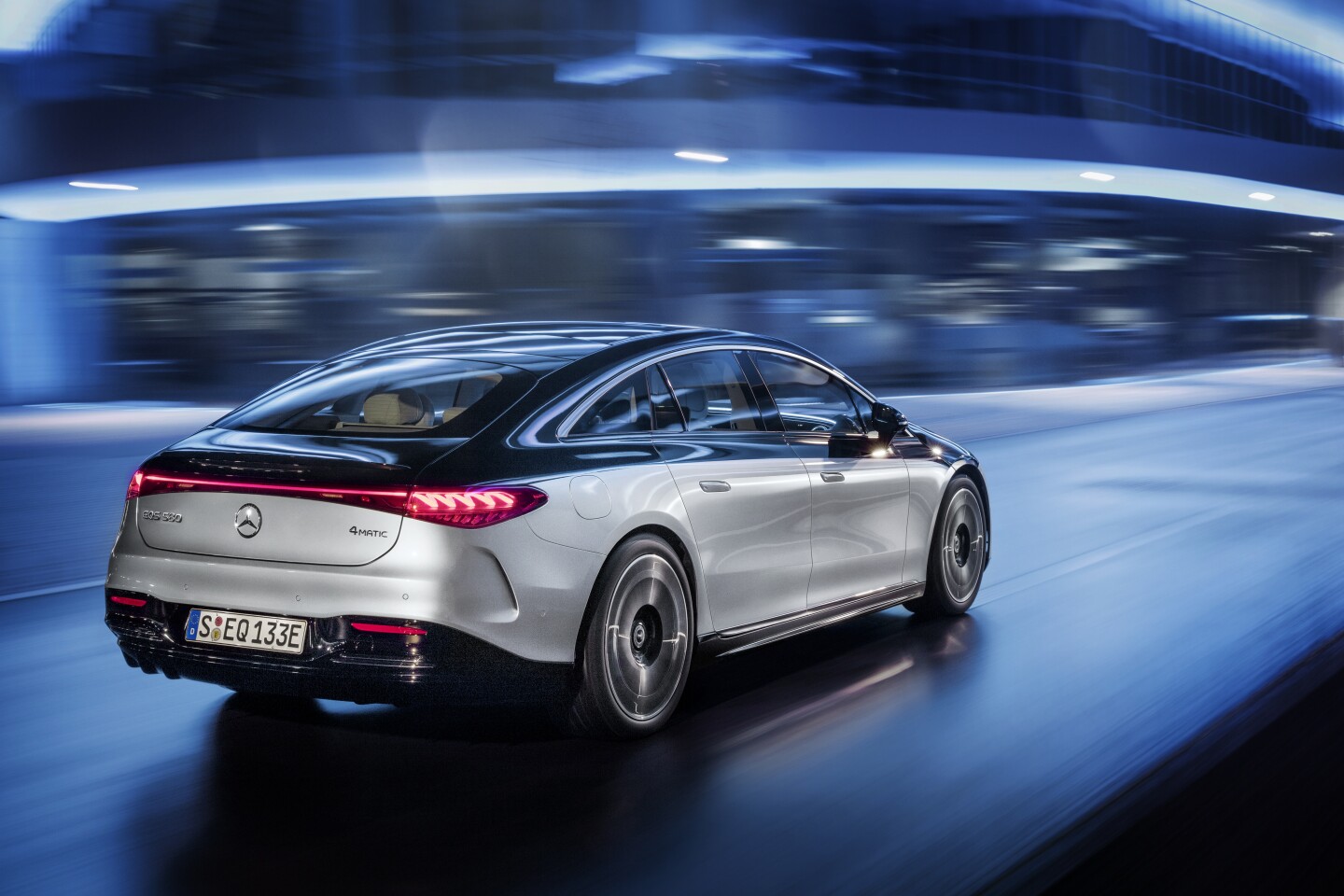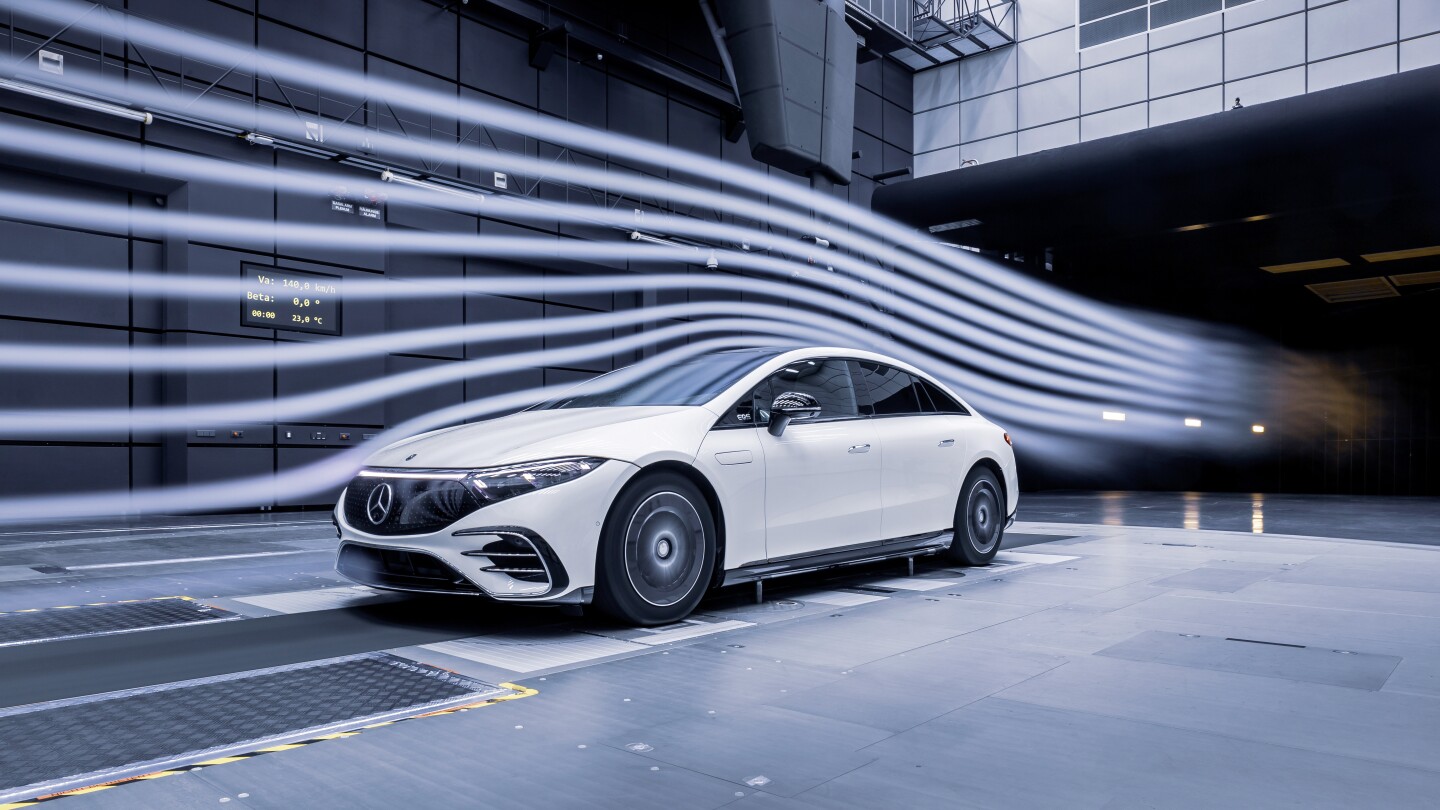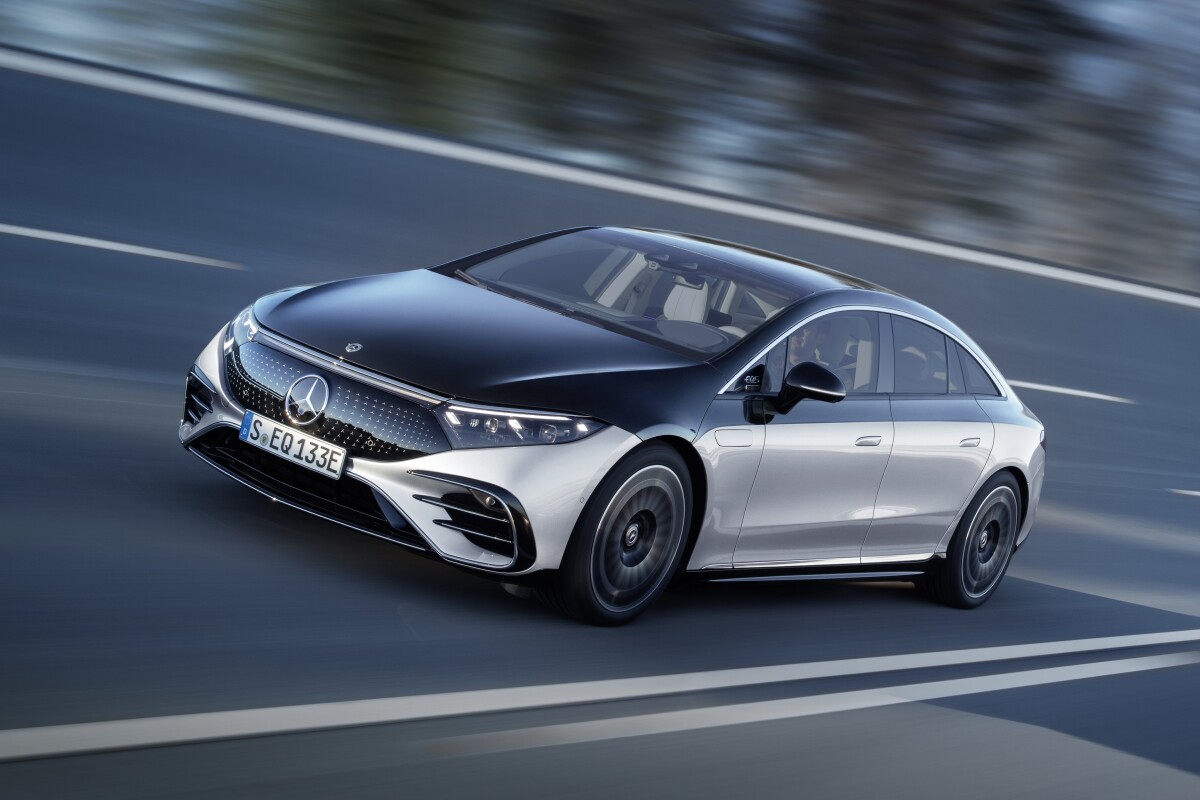Fast-building its EQ family, Mercedes-Benz brings all-electric power to the flagship of the brand: the S-Class. After months of teasing, it has finally given the all-new EQS a proper world premiere. The electric sedan explores the highest echelons of the electric market with a range that pushes 500 miles, a sleek, slippery design that Mercedes defines as the world's most aerodynamic, and more tech than some Silicon Valley zip codes.
The EQS becomes the latest step in Mercedes' Ambition 2039 plan that aims to create a fully carbon-neutral new car fleet within two decades. The car follows the EQC crossover, EQV van and EQA hatchback Mercedes-EQ introduced previously, and takes its place at the top of the EQ family. Mercedes intends for plug-in vehicles to push their way to over half its sales by as early as 2030, and the EQS makes some strong arguments certain to wrest sales from the ICE side ... at least for those shopping the high end of the luxury sedan market.
The US-market EQS 450+ base model comes with a 329-hp (245-kW) rear-axle electric drive. Those looking for more power and performance will be able to step up to the EQS 580 4Matic, which adds a front-axle electric drive for a total of 516 hp (385 kW) of all-wheel drive power. The 450+ sprints from 0 to 60 mph (96.5 km/h) in 5.5 seconds, while the more powerful 580 cuts that to 4.1 seconds. Both cars have their speeds limited to 130 mph (209 km/h). Mercedes also plans to raise the stakes with a 630-hp (470-kW) performance variant in the future.

A combination of carefully optimized factors and features helps the EQS travel up to an estimated 478 miles (770 km) on the WLTP cycle. Most notably, the new scalable high-density battery family tops out a hair under 108 kWh for the EQS, packing roughly 26 percent more capacity than the EQC battery. A smaller 90-kWh battery will also be used in the EQS line. Mercedes plans to stamp each battery with the promise of 70 percent capacity by the 10-year or 155,000-mile (250,000-km) mark. Over-the-air (OTA) updates will keep the energy management system evolving and performing at optimal levels.
Another factor that plays heavily into the EQS' range and capability is its aerodynamic design. Mercedes says it achieves a drag coefficient of 0.20 under optimal conditions, putting it just higher than the 0.19 Volkswagen XL1 wunder-car, a rolling showcase of aerodynamics and efficient engineering, to make it the current market leader, edging out the 0.21 Cd of the Lucid Air and latest Tesla Model S update, both of which do exceed the EQS in estimated range by topping 500 miles (800 km).

Mercedes-EQ also helps increase range with an aggressive brake recuperation program that can decelerate to stop without the driver so much as tapping the brake pedal. The recuperation features in the adaptive cruise control, applying recuperative braking to decelerate based on the traffic pattern ahead. The driver can manually adjust between three recuperation levels using the steering wheel-mounted paddle shifters. When the EQS does run out of juice, it charges at up to 200 kW via DC fast-charging, adding 186 miles (300 km) worth of battery power in as little as 15 minutes.
Upon first look, the 205-in (521-cm) EQS doesn't have the grand appearance of one of the market's most luxurious sedans, at least not the kind of grand appearance we've come to expect over the past century or so. That's largely because the short nose looks like it belongs to a much smaller vehicle, perhaps a subcompact four-door. Stroll around to the side of the car, though, and you'll see the short nose gives way to a stretched fastback cabin with a roofline that nearly drops into the rear fascia in a single swoop. The focus is clearly on freeing up interior space, which we suppose is much more central to the design of an electric luxury sedan than conventionally attractive proportions.

The EQS loses the digitized face of the concept that previewed it, leaning into a more traditional design. The radiator grille is still a smooth panel, but instead of bright blue lights, it wears a pattern of tiny circa-1911 Daimler-Motorengesellschaft stars. Mercedes wraps the headlights with the greater grille surround and pushes the real grilles down around the bumper. We don't particularly like how the dual-tone paint job drips its top color down to the front wheel arches, isolating the front-end from its surroundings – the face looks okay, but not pretty enough to be framed out like that – but those who agree can always go with a single color instead.

Moving back over the fenders and down the sides, the EQS isn't quite as dramatically rounded as the Vision EQS concept, but it does work from the same "seamless" philosophy that aims for a smoother body with few corners or creases. The seamless design continues around the rear fenders and quarter panels, into a sleek full-width taillamp setup.
As expected, that large glasshouse opens up an impressive interior that's big in both size and boundary-pushing design. As the driver approaches, the available automatic driver's door opens on its own and closes the minute he or she depresses the brake pedal. Once seated, both driver and front passenger are greeted by the pillar-to-pillar MBUX Hyperscreen that looks much more natural built into the dashboard than it did hovering around in free space. That big hunk of digital mass adds a 12.3-in OLED passenger screen to the usual combination of digital instrument panel and infotainment screen. To prevent driver distraction, the system automatically dims the passenger screen if the driver-facing camera detects the driver looking over at it.

Inspired by the current focus on health and clean, fresh air, Mercedes equips the EQS with the Energizing Air Control Plus system, which uses a HEPA filter to clean outside air before distributing it through the A/C system. The system also displays inside and outside particulate levels on the Hyperscreen and makes recommendations about closing windows when outside air quality is particularly low.
The S-Class is no stranger to getting the latest in driver-assistance tech, and the EQS comes loaded with 350 sensors to support its myriad assistance systems. The highlight is the new Drive Pilot, to be added in early 2022 in Germany and in additional markets as regulations allow. The selectable automated driving feature takes over driving in heavy traffic at speeds up to 37 mph (60 km/h), eliminating one of the more stressful aspects of commuting and freeing the driver to use the time more productively, making calls or surfing the internet, for example.

The Drive Pilot system controls speed, following distance and lane-centering while also observing traffic signs and events, dealing with unexpected events using evasive maneuvering. The driver must maintain readiness to take over when conditions no longer allow for Drive Pilot operation, and the driver monitoring system ensures that he or she is alert and ready. Should the driver not take over when prompted, the car brakes to a stop and makes an emergency call for help.
Other available EQS technologies include Distronic active distance assist, active lane keeping and lane changing assists, active evasive steering assist, active emergency stop assist and smartphone-activated remote parking assist. The EQS is further prepped for intelligent park pilot, which will offer Level 4 automated parking and pickup, without the driver needing to guide the car via smartphone, in parking lots equipped with Automated Valet Parking (AVP) infrastructure, subject to laws and availability in specific EQS markets.
EQS tech promises to improve over time with OTA updates, both standard and optional. For instance, a planned future upgrade will let owners unlock a 10-degree angle (from 4.5 degrees) on the rear-axle steering system to cut the turn radius from 39 ft (11.9 m) to 35.7 ft (10.9 m). More personalized driving modes will also be possible through OTA updates.
The EQS will launch in Europe in August, with the US launch following shortly thereafter in fall. Pricing information, market-specific specs and options, and other details will be released closer to those respective launches.
Source: Daimler





















